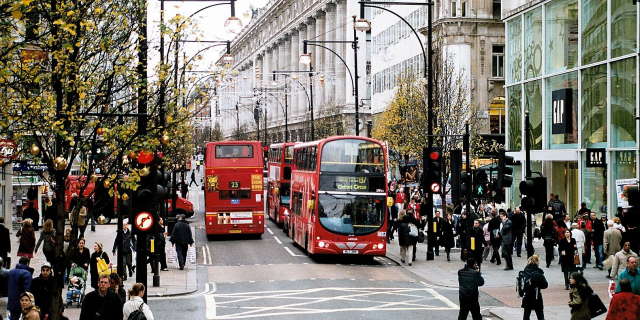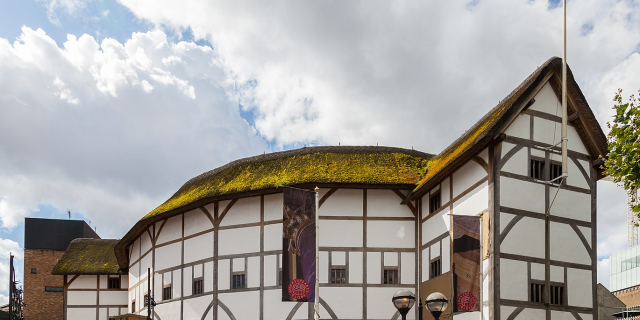Grand Tour
The Grand Tour was the principally 17th- to early 19th-century custom of a traditional trip through Europe, with Italy as a key destination, undertaken by upper-class young European men of sufficient means and rank (typically accompanied by a tutor or family member) when they had come of age (about 21 years old).
The custom—which flourished from about 1660 until the advent of large-scale rail transport in the 1840s and was associated with a standard itinerary—served as an educational rite of passage. Though it was primarily associated with the British nobility and wealthy landed gentry, similar trips were made by wealthy young men of other Protestant Northern European nations, and, from the second half of the 18th century, by some South and North Americans.
By the mid-18th century, the Grand Tour had become a regular feature of aristocratic education in Central Europe as well, although it was restricted to the higher nobility. The tradition declined in Europe as...Read more
The Grand Tour was the principally 17th- to early 19th-century custom of a traditional trip through Europe, with Italy as a key destination, undertaken by upper-class young European men of sufficient means and rank (typically accompanied by a tutor or family member) when they had come of age (about 21 years old).
The custom—which flourished from about 1660 until the advent of large-scale rail transport in the 1840s and was associated with a standard itinerary—served as an educational rite of passage. Though it was primarily associated with the British nobility and wealthy landed gentry, similar trips were made by wealthy young men of other Protestant Northern European nations, and, from the second half of the 18th century, by some South and North Americans.
By the mid-18th century, the Grand Tour had become a regular feature of aristocratic education in Central Europe as well, although it was restricted to the higher nobility. The tradition declined in Europe as enthusiasm for classical culture waned, and with the advent of accessible rail and steamship travel—an era in which Thomas Cook made the "Cook's Tour" of early mass tourism a byword starting in the 1870s.
However, with the rise of industrialization in the United States in the 19th century, American Gilded Age nouveau riche adopted the Grand Tour for both sexes and among those of more advanced years as a means of gaining both exposure and association with the sophistication of Europe. Even those of lesser means sought to mimic the pilgrimage, as satirized in Mark Twain's enormously popular Innocents Abroad in 1869.
The primary value of the Grand Tour lay in its exposure to the cultural legacy of classical antiquity and the Renaissance, and to the aristocratic and fashionably polite society of the European continent. It also provided the only opportunity to view specific works of art, and possibly the only chance to hear certain music.
A Grand Tour could last anywhere from several months to several years. It was commonly undertaken in the company of a cicerone, a knowledgeable guide or tutor.
 The Grand Tourist, like Francis Basset, would become familiar with Antiquities, though this altar is an invention of the painter Pompeo Batoni, 1778.[citation needed]
The Grand Tourist, like Francis Basset, would become familiar with Antiquities, though this altar is an invention of the painter Pompeo Batoni, 1778.[citation needed]Rome for many centuries had already been the destination of pilgrims, especially during Jubilee when European clergy visited the Seven Pilgrim Churches of Rome.
In Britain, Thomas Coryat's travel book Coryat's Crudities (1611), published during the Twelve Years' Truce, was an early influence on the Grand Tour but it was the far more extensive tour through Italy as far as Naples undertaken by the 'Collector' Earl of Arundel, with his wife and children in 1613–14 that established the most significant precedent. This is partly because he asked Inigo Jones, not yet established as an architect but already known as a 'great traveller' and masque designer, to act as his cicerone (guide).[1]
Larger numbers of tourists began their tours after the Peace of Münster in 1648. According to the Oxford English Dictionary, the first recorded use of the term (perhaps its introduction to English) was by Richard Lassels (c. 1603–1668), an expatriate Roman Catholic priest, in his book The Voyage of Italy, which was published posthumously in Paris in 1670 and then in London.[a] Lassels's introduction listed four areas in which travel furnished "an accomplished, consummate Traveller": the intellectual, the social, the ethical (by the opportunity of drawing moral instruction from all the traveller saw), and the political.
 Portrait of Douglas, 8th Duke of Hamilton, on his Grand Tour with his physician Dr. John Moore and the latter's son John. A view of Geneva is in the distance where they stayed for two years. Painted by Jean Preudhomme in 1774.
Portrait of Douglas, 8th Duke of Hamilton, on his Grand Tour with his physician Dr. John Moore and the latter's son John. A view of Geneva is in the distance where they stayed for two years. Painted by Jean Preudhomme in 1774.As a young man at the outset of his account of a repeat Grand Tour, the historian Edward Gibbon remarked that "According to the law of custom, and perhaps of reason, foreign travel completes the education of an English gentleman." Consciously adapted for intellectual self-improvement, Gibbon was "revisiting the Continent on a larger and more liberal plan"; most Grand Tourists did not pause more than briefly in libraries. On the eve of the Romantic era he played a significant part in introducing, William Beckford wrote a vivid account of his Grand Tour that made Gibbon's unadventurous Italian tour look distinctly conventional.[2]
The typical 18th-century stance was that of the studious observer travelling through foreign lands reporting his findings on human nature for those unfortunates who stayed at home. Recounting one's observations to society at large to increase its welfare was considered an obligation; the Grand Tour flourished in this mindset.[3]
In essence, the Grand Tour was neither a scholarly pilgrimage nor a religious one,[4] though a pleasurable stay in Venice and a cautious residence in Rome were essential. Catholic Grand Tourists followed the same routes as Protestant Whigs. Since the 17th century, a tour to such places was also considered essential for budding artists to understand proper painting and sculpture techniques, though the trappings of the Grand Tour—valets and coachmen, perhaps a cook, certainly a "bear-leader" or scholarly guide—were beyond their reach.
The advent of popular guides, such as the book An Account of Some of the Statues, Bas-Reliefs, Drawings, and Pictures in Italy published in 1722 by Jonathan Richardson and his son Jonathan Richardson the Younger, did much to popularise such trips, and following the artists themselves, the elite considered travel to such centres as necessary rites of passage. For gentlemen, some works of art were essential to demonstrate the breadth and polish they had received from their tour.
The Grand Tour offered a liberal education, and the opportunity to acquire things otherwise unavailable, lending an air of accomplishment and prestige to the traveller. Grand Tourists would return with crates full of books, works of art, scientific instruments, and cultural artefacts – from snuff boxes and paperweights to altars, fountains, and statuary – to be displayed in libraries, cabinets, gardens, drawing rooms, and galleries built for that purpose. The trappings of the Grand Tour, especially portraits of the traveller painted in continental settings, became the obligatory emblems of worldliness, gravitas and influence. Artists who particularly thrived on the Grand Tour market included Carlo Maratti, who was first patronised by John Evelyn as early as 1645,[5] Pompeo Batoni the portraitist, and the vedutisti such as Canaletto, Pannini and Guardi. The less well-off could return with an album of Piranesi etchings.
 Northerners found the contrast between Roman ruins and modern peasants of the Roman Campagna an educational lesson in vanities[citation needed] (painting by Nicolaes Pietersz Berchem, 1661, Mauritshuis)
Northerners found the contrast between Roman ruins and modern peasants of the Roman Campagna an educational lesson in vanities[citation needed] (painting by Nicolaes Pietersz Berchem, 1661, Mauritshuis)The "perhaps" in Gibbon's opening remark cast an ironic shadow over his resounding statement.[6] Critics of the Grand Tour derided its lack of adventure. "The tour of Europe is a paltry thing", said one 18th century critic, "a tame, uniform, unvaried prospect".[7] The Grand Tour was said to reinforce the old preconceptions and prejudices about national characteristics, as Jean Gailhard's Compleat Gentleman (1678) observes: "French courteous. Spanish lordly. Italian amorous. German clownish."[7] The deep suspicion with which Tour was viewed at home in England, where it was feared that the very experiences that completed the British gentleman might well undo him, were epitomised in the sarcastic nativist view of the ostentatiously "well-travelled" maccaroni of the 1760s and 1770s.
Also worth noticing is that the Grand Tour not only fostered stereotypes of the countries visited but also led to a dynamic of contrast between northern and southern Europe. By constantly depicting Italy as a "picturesque place", the travellers also unconsciously degraded Italy as a place of backwardness.[8] This unconscious degradation is best reflected in the famous verses of Lamartine in which Italy is depicted as a "land of the past... where everything sleeps."[9]
 Goethe in the Roman Campagna, by Johann Tischbein, 1787
Goethe in the Roman Campagna, by Johann Tischbein, 1787In Rome, antiquaries like Thomas Jenkins were also dealers and were able to sell and advise on the purchase of marbles; their price would rise if it were known that the Tourists were interested. Coins and medals, which formed more portable souvenirs and a respected gentleman's guide to ancient history were also popular. Pompeo Batoni made a career of painting the English milordi posed with graceful ease among Roman antiquities. Many continued on to Naples, where they also viewed Herculaneum and Pompeii, but few ventured far into Southern Italy, and fewer still to Greece, then still under Turkish rule.
After the advent of steam-powered transportation around 1825, the Grand Tour custom continued, but it was of a qualitative difference — cheaper to undertake, safer, easier, open to anyone. During much of the 19th century, most educated young men of privilege undertook the Grand Tour. Germany and Switzerland came to be included in a more broadly defined circuit. Later, it became fashionable for young women as well; a trip to Italy, with a spinster aunt as chaperone, was part of the upper-class women's education, as in E. M. Forster's novel A Room with a View.
British travellers were far from alone on the roads of Europe. On the contrary, from the mid-16th century, the grand tour was established as an ideal way to finish off the education of young men in countries such as Denmark, France, Germany, the Netherlands, Poland and Sweden.[10] In spite of this the bulk of research conducted on the Grand Tour has been on British travellers. Dutch scholar Frank-van Westrienen Anna has made note of this historiographic focus, claiming that the scholarly understanding of the Grand Tour would have been more complex if more comparative studies had been carried out on continental travellers.[11]
Recent scholarship on the Swedish aristocracy has demonstrated that Swedish aristocrats, though being relatively poorer than their British peers, from around 1620 and onwards in many ways acted as their British counterparts. After studies at one or two renowned universities, preferably those of Leiden and Heidelberg, the Swedish grand tourists set off to France and Italy, where they spent time in Paris, Rome and Venice and completed the original grand tour on the French countryside.[12] King Gustav III of Sweden made his Grand Tour in 1783–84.[13]
Cite error: There are <ref group=lower-alpha> tags or {{efn}} templates on this page, but the references will not show without a {{reflist|group=lower-alpha}} template or {{notelist}} template (see the help page).






































Add new comment